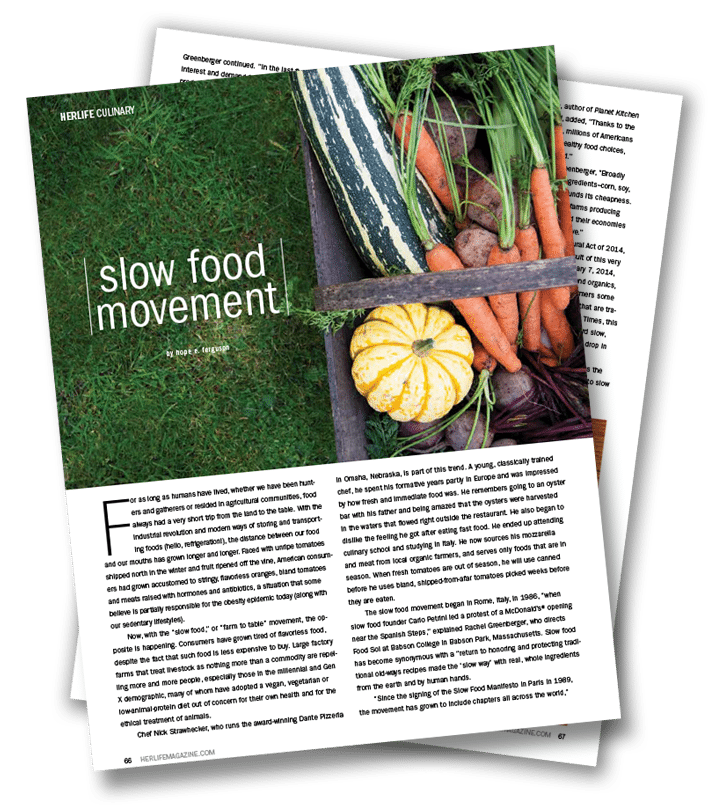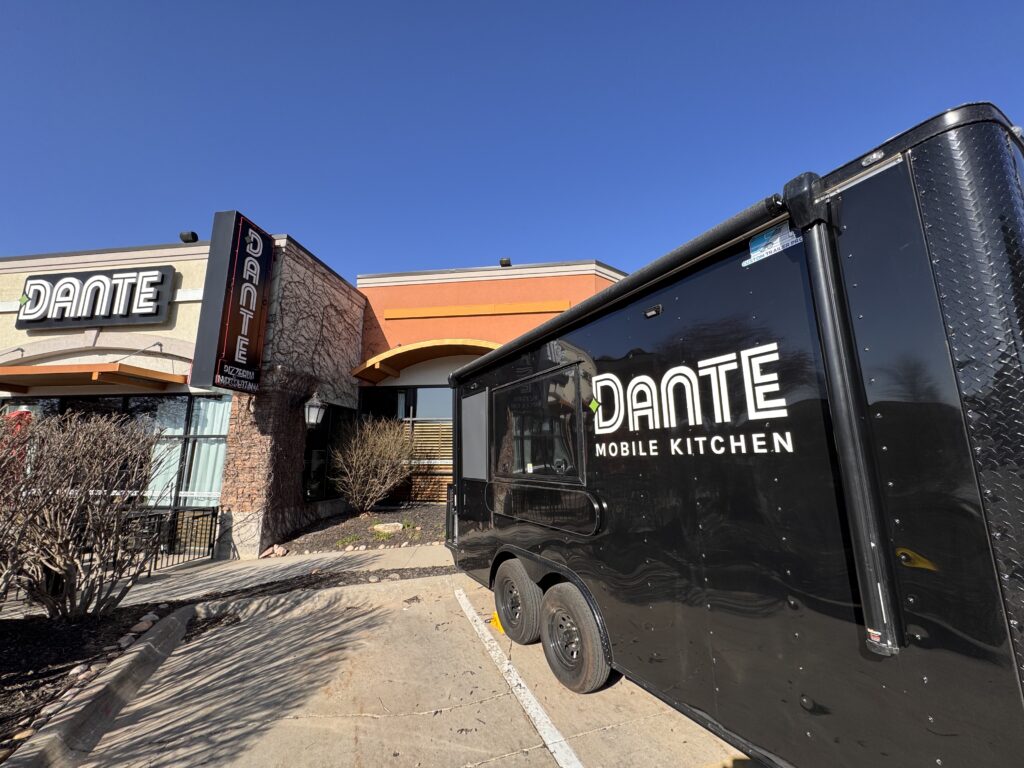(Article as seen in HERLIFE Magazine, Kansas City Edition – June 2014)
By Hope E. Ferguson
For as long as humans have lived, whether we have been hunters and gatherers or resided in agricultural communities, food always had a very short trip from the land to the table. With the industrial revolution and modern ways of storing and transporting foods (hello, refrigeration!), the distance between our food and our mouths has grown longer and longer. Faced with unripe tomatoes shipped north in the winter and fruit ripened off the vine, American consumers had grown accustomed to stringy, flavorless oranges, bland tomatoes and meats raised with hormones and antibiotics, a situation that some believe is partially responsible for the obesity epidemic today (along with our sedentary lifestyles).
 Now, with the “slow food,” or “farm to table” movement, the opposite is happening. Consumers have grown tired of flavorless food, despite the fact that such food is less expensive to buy. Large factory farms that treat livestock as nothing more than a commodity are repelling more and more people, especially those in the millennial and Gen X demographic, many of whom have adopted a vegan, vegetarian or low-animal-protein diet out of concern for their own health and for the ethical treatment of animals.
Now, with the “slow food,” or “farm to table” movement, the opposite is happening. Consumers have grown tired of flavorless food, despite the fact that such food is less expensive to buy. Large factory farms that treat livestock as nothing more than a commodity are repelling more and more people, especially those in the millennial and Gen X demographic, many of whom have adopted a vegan, vegetarian or low-animal-protein diet out of concern for their own health and for the ethical treatment of animals.
Chef Nick Strawhecker, who runs the award-winning Dante Pizzeria in Omaha, Nebraska, is part of this trend. A young, classically trained chef, he spent his formative years partly in Europe and was impressed by how fresh and immediate food was. He remembers going to an oyster bar with his father and being amazed that the oysters were harvested in the waters that flowed right outside the restaurant. He also began to dislike the feeling he got after eating fast food. He ended up attending culinary school and studying in Italy. He now sources his mozzarella and meat from local organic farmers, and serves only foods that are in season. When fresh tomatoes are out of season, he will use canned before he uses bland, shipped-from-afar tomatoes picked weeks before they are eaten.
The slow food movement began in Rome, Italy, in 1986, “when slow food founder Carlo Petrini led a protest of a McDonald’s® opening near the Spanish Steps,” explained Rachel Greenberger, who directs Food Sol at Babson College in Babson Park, Massachusetts. Slow food has become synonymous with a “return to honoring and protecting traditional old-ways recipes made the ‘slow way’ with real, whole ingredients from the earth and by human hands. “Since the signing of the Slow Food Manifesto in Paris in 1989, the movement has grown to include chapters all across the world,” Greenberger continued. “In the last five years, with the explosion in interest and demand for organic, local, fair trade/fair wage and humane products, Slow Food International has gotten stronger.”
Stacy Bevan, clinical assistant professor in the College of Agriculture and Applied Sciences at Utah State University, said, “Slow food is available to all for an affordable price, yet supports the farmers who produced it. The industrialization of our food system is driving this trend,” she explained. “The emphasis on sitting down and enjoying a homemade meal is being lost. Food preparation and cooking skills are becoming a thing of the past in many homes. Many consumers do not know where their food came from, the path of farm to fork, or how it was prepared. Slow food focuses on restoring this forgotten knowledge, empowering its adherents.” Kerry Dunnington, author of Planet Kitchen Table: Recipes for a Sustainable Future in Food, added, “Thanks to the exploding knowledge of how diet affects health, millions of Americans are turning away from fast, inexpensive and unhealthy food choices, looking instead for farm fresh and home-prepared.” But is slow food affordable? According to Greenberger, “Broadly speaking, fast food is cheaper because the core ingredients–corn, soy, rice, wheat–are heavily federally subsidized, which funds its cheapness.
If there were no federal Farm Bill subsidies to mega-farms producing core crops, giving them competitive advantage beyond their economies of scale, then ‘fast food’ would become more expensive.” In fact, the Farm Bill, technically titled the Agricultural Act of 2014, has undergone a historic change recently as a direct result of this very movement. The bill, signed by President Obama on February 7, 2014, contains provisions for crop insurance for fruits, veggies and organics, known as “nontraditional crops” in the bill, giving these farmers some of the same help and security as the corn and soy farmers that are traditionally subsidized. According to an article in The New York Times, this is due to a historic shift in American eating habits, back toward slow, healthy foods, which has at the same time led to a concurrent drop in childhood obesity rates, the first in years.
A 1974 song by Peter Allen and Carole Bayer Sager contains the well-known refrain, “Everything old is new again.” When it comes to slow food, surely nothing could be truer.




